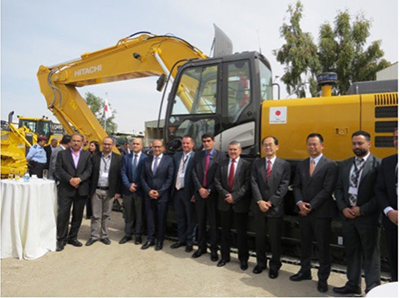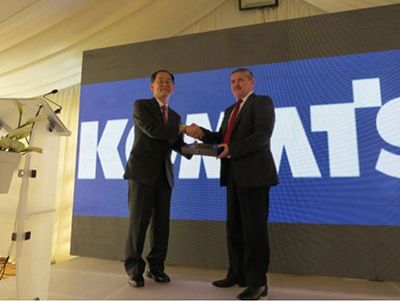FY2020 MOFA ODA Evaluation Results
Evaluation of Economic and Social Development Program in Jordan in FY2015
| Chief Evaluator | SATO Kan Hiroshi Chief Senior Researcher, Research Operations Department, IDE-JETRO |
| Consultant | Japan Techno Co., Ltd. |
| Period of the Evaluation Study | September 2020 to March 2021 |
| Field Survey Country | Jordan (remote survey conducted online) |
Background, Objectives, and Scope of the Evaluation
MOFA implemented a grant aid project (Grant Aid for Economic and Social Development Program) in 2016 aimed at improving waste management and water-supply conditions in the host communities of Syrian refugees by providing equipment and products manufactured in Japan in order to contribute to economic and social development in Jordan. This evaluation assesses the results of the grant aid project implemented by MOFA, with the main objectives of obtaining recommendations and learning lessons for future ODA planning and implementation as well as ensuring public accountability.
Summary of Evaluation Results
● Development Viewpoints
(1) Relevance of Project
The project contributed to alleviating the weakening of socioeconomic infrastructure caused by a large influx of Syrian refugees, as well as to easing tensions with refugees in host communities, and was consistent with Japan’s high-level policies, development needs in Jordan, and international priority issues. Relationships with other donors were also maintained through participation in the donor community and the framework of the Jordan Response Platform for the Syria Crisis in order to address the Syrian refugee issue. Japan’s comparative advantages are evident in the high quality of the provided equipment and products.
(Evaluation Result: Satisfactory = )
(2) Effectiveness of Results
The provided equipment and products were procured and delivered as planned in terms of both specifications and quantities. The procured equipment and products were handed over as planned to the end users—municipalities, water supply entities, and waste management entities nationwide—under the responsibility of the Jordanian side, and data obtained from the project survey suggest that the operating condition after delivery was good. Results were therefore achieved as envisioned by the program. Furthermore, based on the Jordanian side’s awareness of the issue, the sites targeted for provision of equipment were selected on the assumption that refugee host communities exist not only in certain regions but rather throughout the entire country. Equipment and products were broadly distributed to over 60 local municipalities and entities scattered across 12 governorates nationwide.
(Evaluation Result: Satisfactory = )
(3) Appropriateness of Processes
The project was planned and implemented to realize the requests of the Government of Jordan to the fullest extent. The implementation structure of the relevant agencies and the assistance implementation process was also adequate and conformed to the Exchange of Notes (E/N) between the two countries as well as to the guidelines of MOFA.
(Evaluation Result: Satisfactory = )
(Note) Ratings: Highly Satisfactory = ; Satisfactory = ; Partially Unsatisfactory = ; Unsatisfactory =
● Diplomatic Viewpoints
(1) Diplomatic Importance
Since Japan depends on the Middle East for many of its energy resources, peace and stability in the Middle East are directly linked to its national interests, and Jordan holds a key position in that region. Cooperating in the political/social stability and economic development of Jordan is therefore important for ensuring Japan’s energy security through peace and stability in the Middle East and for maintaining and advancing friendly bilateral relations, making development cooperation highly significant. In supporting host communities affected by the influx of Syrian refugees, this project contributed to the stabilization of the region and played a part in Japan’s cooperation toward the stabilization of the Middle East and Jordan.
(2) Diplomatic Impact
The project’s timely implementation in response to the requests of the Government of Jordan helped to strengthen bilateral relations. Its implementation is also an example of Japan’s proactive contributions to refugee issues, which Japan is making strong efforts to showcase to the international community as an advocate of “human security.” Like other similar cooperation related to refugee relief, it can therefore be expected to help demonstrate Japan’s stance to the rest of the world.
Recommendations Based on Evaluation Results
(1) Necessity of More Detailed Project Explanations
In this project, equipment and products were distributed to governorates in the southern region, where the influx of registered refugees is relatively small, in greater amounts proportionally to the registered refugee population when compared to other regions. It is difficult to understand the rationale behind this allocation merely by referring to the published information. The evaluation team found that the project achieved the results envisioned by the program and did not have any objections to the assignment of the target group. However, it is difficult to immediately understand the details of how the entire country of Jordan was assigned as the target group for the project based on problem setting on the Jordanian side simply by referring to the information published by MOFA. The appropriateness of the decision-making process should have been explained in greater depth. This is an area where improvement is needed in future project explanations.
(2) Performance Management through the Introduction of an Objective Framework
Clear articulation of outcomes and impacts, rationalization of how outputs efficiently and effectively lead to outcomes, and clarification of results through the setting and measurement of indicators are effective for project implementation. It would therefore be worthwhile to consider the introduction of implementation management that clarifies the theoretical nature of input-output-outcomes/impacts by creating and sharing an objective framework that simplifies the logical framework starting from the stage of verifying the details of the request for assistance from the recipient country’s government, as well as performance management through the setting and measurement of indicators.
(3) Implementation of Effective Public Relations
For this project, it would have been desirable to create effective, appealing publicity with a clear narrative in connection with the overall picture, such as the framework of Middle Eastern diplomacy, initiatives relating to human security including refugee relief and humanitarian assistance, and the history of bilateral relations with Jordan. It is crucial for Japan to actively showcase through appropriate means both at home and abroad how it is taking on international responsibilities as well as its presence in the Middle East, a region that is extremely important to Japan, in terms of the Syrian crisis, refugee issues, and humanitarian assistance, in order to increase public understanding.
(4) Monitoring and Measurement of Effectiveness for the Operation and Maintenance of Equipment/Products
There is a need to devise means of grasping the operating conditions of the equipment and products provided through the project beyond the existing monitoring systems of implementing agencies. For example, implementing agencies have regular accounting and project reporting obligations, and it is assumed that asset management is part of this, meaning that they have a grasp of the ownership and operating conditions of equipment and products. Setting up a system to monitor the operating conditions of equipment and products provided through the project by utilizing this existing system for management of equipment and products would be effective when implementing similar projects in the future. Also, the Embassy of Japan in Jordan intends to monitor the usage of the equipment through on-site inspections (suspended at the time of this survey due to the effects of the COVID-19 pandemic), which would be a meaningful endeavor.

Equipment handover ceremony related to assistance in the waste sector

Delivery of key at equipment handover ceremony
